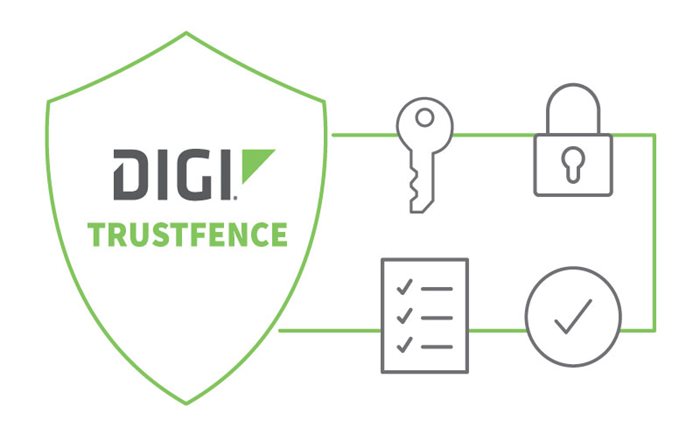In connected operations, security isn’t optional — it’s the foundation of trust.
Recent Moxa router vulnerabilities revealed critical flaws, including hard-coded credentials and authentication weaknesses, that could allow attackers to take control of industrial devices. For organizations managing critical infrastructure, the lesson is clear: you can’t just rely on patches for security. It must be built in — by design.
Get Our Solution Brief
Learn about edge-to-cloud connectivity solutions for secure networks and centralized visibility
Download PDF
Why It Matters
Industrial networks power systems the world depends on — energy grids, manufacturing lines, transportation networks, and utilities. When a network device is compromised, it’s not just a data issue. It’s downtime, safety risk, and potential loss of customer trust.
In October 2025, Moxa confirmed several vulnerabilities (including CVE-2025-6950) affecting routers such as the EDR-G9010, EDR-8010, and TN-4900 families. These issues stemmed from static credentials and weak access controls, exposing customers to potential administrative takeover.
Even with patches available, a single-layer, reactive approach can’t keep pace with modern threats. True security comes from a combination of proactive design, ongoing validation, and community collaboration.
Security by Design: Digi TrustFence®
Every Digi Infrastructure Management solution is built on Digi TrustFence® — our multi-layered security framework designed to protect connected infrastructure from the inside out.
TrustFence includes:
- Unique, encrypted credentials (never shared or hard-coded)
- Secure boot and signed firmware to prevent tampering
- TLS/SSL encryption for both data and management traffic
- Role-based access controls and detailed audit logging
This foundation provides more than patching or compliance — it offers proactive defense that is engineered into the core of our products.

Security in Practice: Continuous Testing, Validation, and Collaboration
Security doesn’t stop at the product launch. At Digi, we take a layered, transparent approach that extends beyond internal testing to active collaboration with the broader security community.
All Digi Accelerated Linux (DAL)-based products undergo comprehensive testing for every release build, including:

Beyond internal testing, Digi conducts annual third-party penetration tests and maintains an ongoing partnership with Bugcrowd, where a virtualized DAL environment is continuously tested by global security researchers.
This open approach strengthens our products through responsible disclosure and rapid remediation. Customers and researchers alike are encouraged to report findings through the Digi Security Center, ensuring a streamlined, transparent process that improves security for everyone.
Continuous Protection with Digi LifeCycle Assurance
Security must evolve alongside your infrastructure. Digi LifeCycle Assurance ensures your devices remain secure, supported, and up to date long after deployment.
Each LifeCycle Assurance device includes one-year of:
- 24/7 expert technical support
- Access to Digi Remote Manager (cloud or On-Prem) for centralized visibility and automation
- Proactive firmware updates and vulnerability monitoring
- A five-year best-in-class hardware warranty
This commitment extends Digi’s philosophy of security by design into every stage of ownership — from deployment to long-term operation.

Built on Trust. Proven by Time.
For over four decades, Digi has helped global enterprises connect, automate, and protect critical operations — from hospitals and factories to energy networks and smart cities.
Our security story isn’t just about features; it’s about accountability, transparency, and continuous improvement. By combining Digi TrustFence, Digi LifeCycle Assurance, and open collaboration with the security community, we ensure that every product is both secure by design and resilient over time.
Ready to modernize and secure your industrial network?
Request a free infrastructure assessment to see how Digi Infrastructure Management can help you build a safer, more resilient connected environment — backed by built-in security, continuous validation, and global trust.

What exactly happened with the Moxa router vulnerabilities?
In early 2025, Moxa disclosed two serious vulnerabilities: CVE‑2024‑9138 (hard-coded credentials allowing privilege escalation) and CVE‑2024‑9140 (OS command-injection flaw enabling remote arbitrary code execution). These flaws impacted multiple Moxa router and secure-router models used in industrial/OT networks.
Why is the MOXA vulnerability issue a big deal for industrial/operations environments?
Because routers like Moxa’s are often part of mission-critical infrastructure (transportation, utilities, oil & gas, manufacturing). If a router is compromised, operations can be disrupted, data can be exposed, or attackers can control parts of the network.
What can organizations do to mitigate risk right now?
Here are some quick steps:
- Verify if any Moxa devices in your environment are on affected firmware versions.
- If yes, update to the patched firmware versions where available.
- If patching is not yet feasible, reduce exposure: place devices behind firewalls, restrict SSH/admin access to trusted IPs only, monitor traffic, isolate OT/industrial segments.
- Use a continuous lifecycle management and security-assurance program (such as Digi’s LifeCycle Assurance) to keep firmware, configurations, and access controls under ongoing review.
How does Digi Infrastructure Management (IM) + Digi LifeCycle Assurance help with issues like this?
The Digi IM + LifeCycle Assurance approach helps organizations:
- Gain visibility into all devices and their firmware/config states.
- Identify devices with outdated firmware, known vulnerabilities, or unauthorized access.
- Automate firmware updates, configuration management, and security-policy enforcement (e.g., access controls, network isolation) across the lifecycle of each device.
- Proactively prevent the “security failure → operations stop” chain described in the blog, by having both visibility and action baked into the process.
What should I ask my vendor or service provider after reading this?
Some good questions:
- “Are any of our routers, gateways, or network appliances like Moxa in scope for the recent CVEs?”
- “What is our firmware-update program for industrial/embedded devices, and how often is it audited?”
- “How are we proactively monitoring access, privileged accounts, and segmentation for OT/industrial devices?”
- “Do we have a lifecycle-assurance policy that includes device onboarding, firmware review, end-of-life planning, and periodic risk assessment?”
If we don’t use Moxa routers, should we still care about this blog and its lessons?
Absolutely. The specific vendor (Moxa) serves as a concrete example, but the broader lesson applies to any industrial/operational device: lack of visibility into firmware, default credentials, weak access controls, or unmanaged configuration can cause major disruption. Adopting a lifecycle-assurance mindset ensures you’re not caught off guard by the “next Moxa”.
Next Steps